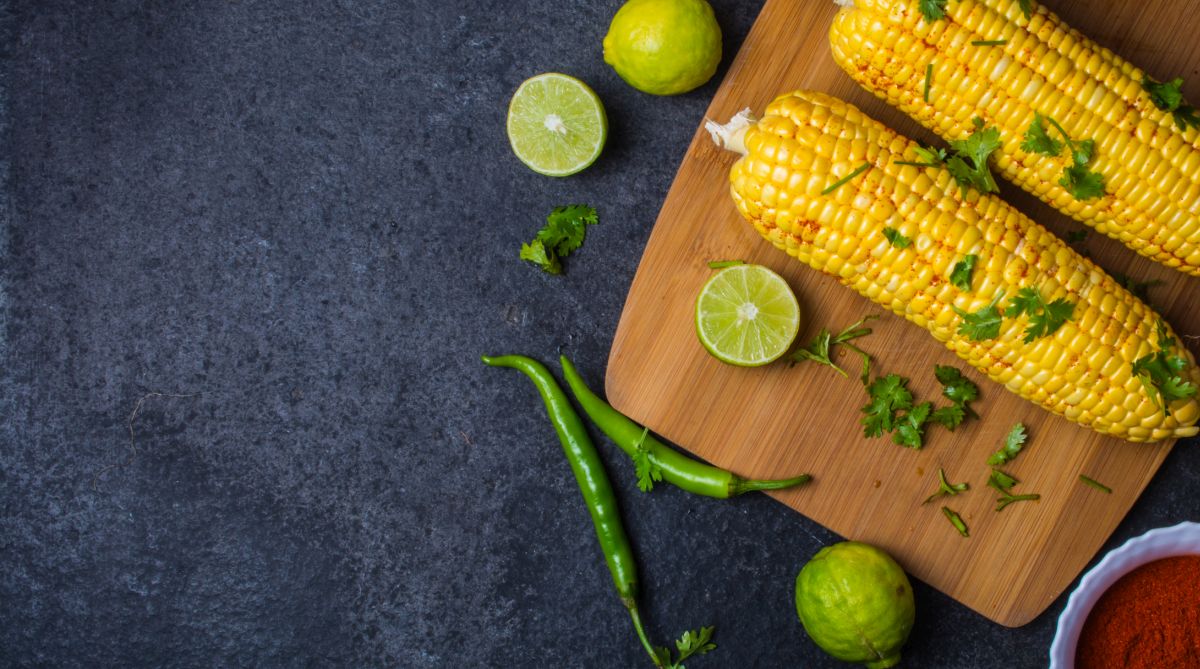Amazon deforestation falls to lowest level in 6 yrs
Amazon deforestation falls to lowest level in 6 yrs
Corn production has increased from 765 million metric tons in 2010 to 1116.41 million metric tons in 2020. The United States is the foremost corn producer, accounting for about 360 million metric tons production. The US is followed by China, Brazil and the EU.

(Photo credits: Getty images)
The high demand for corn in the global market is compelling farmers toreplace native food grains with corn. Corn is widely used by industries like food, cosmetics and ethanol production. Advanced cultivation techniques, improved fertilization and genetically high breed varieties have resulted in increase of corn yield in 20th century. According to a report the global corn industry is expected to reach $199 billion dollar by 2026. Most of the grasslands in US, Africa and Europe are being converted to cropland with alarming biodiversity loss, alteration of ecosystem services and increase in greenhouse gas emissions. GHG emissions for crops or products are measured as per their carbon foot print. The estimated carbon footprint for maize production in conventional, reduced, and no-tillage systems is reported respectively at 2347.4, 2353.4, and 1868.7 CO2 eq. per hectare.
Corn production has increased from 765 million metric tons in 2010 to 1116.41 million metric tons in 2020. The United States is the foremost corn producer, accounting for about 360 million metric tons production. The US is followed by China, Brazil and the EU. Corn products are in high demand in the food market – corn grain, corn starch, corn syrup, and corn chips. This is a major staple food for humans and a key feed for poultry and dairy cattle. An increase in corn-based alcohol production is another major reason for its high demand in the market.
The low harvest time (60-100 days), high market demand and good profit incentivize farmers to cultivate more corn. The demand for corn has influenced subsistence agricultures across the globe. Brazil recorded about 60 per cent increase in corn production in the last 10 years. Brazil is the second largest corn exporter in the world.
Advertisement
Brazilian grassland accounts for 30 per cent of Brazil’s corn production. The increased corn agriculture has destroyed about 40 per cent of the native vegetation in the region. The corn is also harvested from Mato Grasso, the Amazon frontier state. The cultivation of corn along with soy in Brazil are responsible for converting pastureland into agricultural fields. This along with deforestation to facilitate crop production is destabilizing the ecosystem services in the region. It is transforming the pristine Amazon rain forest into pastureland.
There was an 88 per cent rise in deforestation in the Amazon rain forest in 2019 compared to 2018. This rain forest ecosystem is home to about 3 million biological species and over 2500 plant varieties. The Amazon constitutes 60 per cent of the world’s rain forests and supplies 20 per cent of the world’s oxygen in exchange for sequestering harmful CO2. Hence, it is popularly referred to as the lungs of the world. Any damage to this unique ecosystem can have irreparable global consequences. Temporary economic gains from corn export can never compensate for these losses.
Most West African countries cultivate corn as it is the major diet of rural people. This region is worst affected by climate change and water scarcity. According to reports, about 1 million deaths due to hunger and famine was recorded in this region between 1968- 1980. About 25 per cent of farmland in Africa cultivates maize. The cultivation of crops in the African savanna was promoted by the African Development Bank. 400 million hectares of the savanna region is expected to be converted into farmlands. Though drought resistant, corn requires water for its growth. Hence, facilitating massive corn production in this area can burden the already depleting water recourses. This can accelerate the southward migration of the Sahara desert and parch the unique yet diverse Savana grassland ecosystem. The conversion of this grassland ecosystem into farmland is directly affecting the natural biodiversity and food chain.
On the one hand, scientists are engaged in supplying the world with high yield, stress resistant, pest resistant corn varieties. But on the other hand, farm industries are converting more and more forestland and grassland to corn production. This sets in motion the vicious cycle of deforestation and biodiversity loss in the tropics, subtropics and temperate regions across the globe.
Corn is an important crop which serves millions of people, and contributes greatly to food security. But the artificial demand for this crop created in the market promotes unsustainable cultivation practices. The climate change movement is focused on the global reduction in GHG emissions. Public opinion should also be generated against corn cultivation. For short term economic gains, corn cultivation is resulting in enormous biodiversity loss, deforestation and depletion of natural forest resources.
The writers are, respectively, an independent researcher, Assistant Professor and Dean at Jindal School of Environment and Sustainability, O.P. Jindal Global University, Sonipat, Haryana
Advertisement